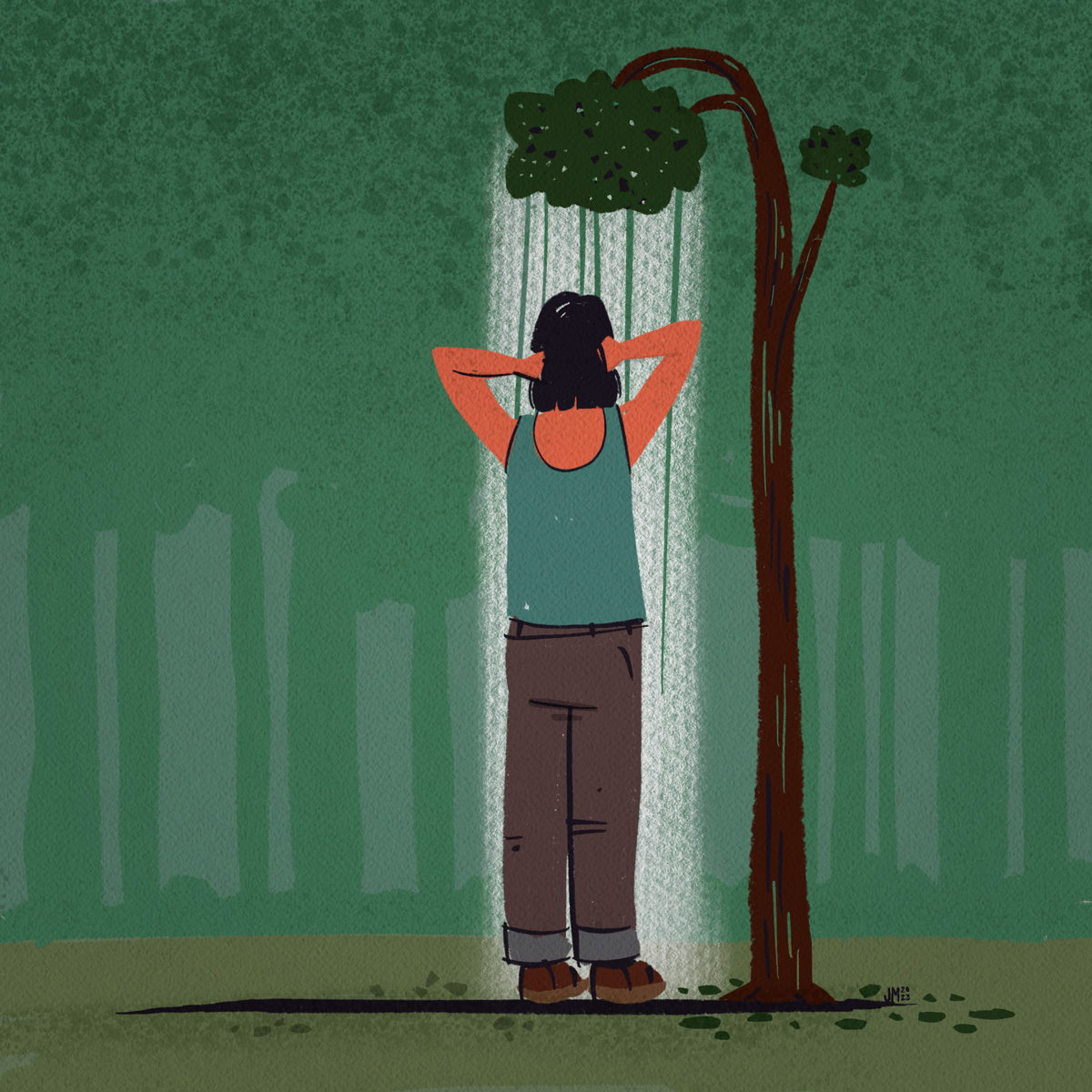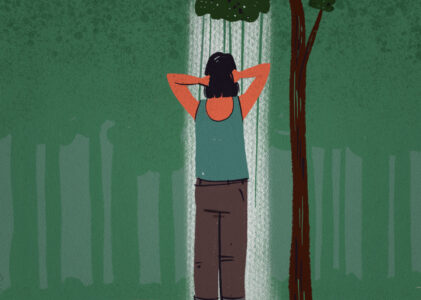Forest bathing makes meditation fun
Can you smell spring in the air? Do the flowers, budding leaves and warming temps make you want to get outside? If you’re eager to unwind from daily stressors and reconnect with nature, consider forest bathing.
Forest bathing refers to the Japanese art of Shinrin-yoku. It’s a mindfulness practice performed in nature to help you focus on your senses and connect to something greater than yourself—the Earth.
Forest bathing taps into our evidence-based understanding that being in nature is good for us. Among other things, time spent in nature may improve our stress levels, mood, concentration, immune function and cardiovascular health [1, 2, 3].
So, if you’re feeling stressed or just itching for a new adventure, read on to plan your forest bath.

Steps to create your own forest bath
The general idea is to move slowly, focus on your senses, and absorb the forest atmosphere. Put aside your ego and open yourself up to curiosity and exploration. Feel the energy of life around you and offer gratitude for your place within it.
Plan your trip with these steps:
- Find a place to go. Choose a green space that feels peaceful and calming. It doesn’t have to be a forest—a pleasant park, yard or natural space will do. However, the more immersive and removed from everyday life, the more intense your experience may be.
- Plan your visit. Decide how much time you can spend. Give yourself enough of a buffer in your schedule to fully immerse yourself in the experience without having to rush.
- Leave technology behind. If you must take your phone, turn it off. Take advantage of this opportunity to fully engage with the natural world, away from modern distractions.
- Wear comfortable clothes. This is neither a hike nor a literal bath. Wear clothes you feel comfortable sitting in and shoes that can handle going off trail.
- Stay hydrated. Bring water and other necessities with you.
Exercises to try during your forest bath
There is no right way to immerse yourself in nature. However, these exercises may help you get started.
Revel in presence
Find a pleasant spot to stand for a while and explore your surroundings with your senses.
- Look around with heightened awareness at your environment.
- Close your eyes and focus on the sounds of the forest. Notice the wind on your skin. Feel the Earth beneath your feet. What do you smell?
- If you feel safe, spend about 15 minutes with your eyes closed and continue to focus on your senses.
Gather texture
Wander slowly and explore the way things feel around you—rough tree bark, spongy moss, slippery rocks.
Listen to the birds
Do you hear different birds calling to each other? Focus on the differences in their vocalizations. What do you think they’re saying?
Follow your nose
Explore the area through your nose, bending to smell moss, flowers, decomposing leaves—whatever pulls you.
Befriend a tree
If you feel silly doing this, remember that this experience is about opening yourself up to curiosity. Give yourself permission to explore with childlike wonder.
Find a tree that looks good to you and sit down, leaning your back against its bark. Breathe in and out slowly and deeply and close your eyes.
Imagine the root system beneath you. Recognize that this tree is connected to a complex network of flora and fauna that communicate with one another. They share a bond that helps create and sustain life.
What do you think about this tree? How does it make you feel? What wisdom might it share with you?
Study geometry
Look around for a fern or another plant with a complex pattern of leaves. Focus on the arrangement of its features. Notice the spaces between leaves and the shapes they create.
Next Steps
We hope these tips inspire you to engage in activities that help you relax and enjoy the moment.
If you or someone you love struggles with issues like stress, anxiety, or depression, you might benefit from talking to a professional.
Call your doctor or contact Athena Care, for mental health care in Tennessee.
One of our Care Coordinators will help you get the care you need.

Rachel Swan, MS
Editor
Rachel has a Masters of Science in Clinical Psychology from Vanderbilt University, where she spent 16 years as a Research Analyst in the Psychology and Human Development Department.


